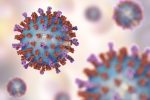Firazyr Prescriptions on the Rise in Sweden, Especially for Women
Increase might indicate better disease awareness rather than more attacks
Written by |

Rates of prescriptions for Firazyr (icatibant), an on-demand treatment to control swelling episodes in people with hereditary angioedema (HAE), have increased in recent years, especially for women, according to a study from Sweden.
While the finding could mean that more patients have poorly-controlled disease, more prescriptions for the medication might also imply better disease awareness, according to study researchers.
Use of preventive treatments, including androgens and plasma-derived C1-inhibitor protein (C1-INH) products such as Haegarda and Berinert remain high in Sweden. But medications known to exacerbate HAE, such as estrogens and angiotensin-converting enzyme (ACE) inhibitors, were rarely used.
The study, “Trends in Treatments With Disease-Specific And Interfering Drugs In Patients With Hereditary Angioedema In Sweden,” was published in The Journal of Allergy and Clinical Immunology: In Practice.
Study set out to identify trends in HAE treatments in Sweden from 2005–2019
HAE types 1 and 2 are caused by genetic mutations resulting in low or deficient C1-INH in the body, making it unable to block the signaling cascades that result in swelling attacks in HAE.
These patients can receive prophylactic therapies to help prevent the onset of attacks, but also have on-demand treatments available, which work to stop an ongoing attack. Yet, while the number of available treatments has grown over the last decades, offering patients more options for controlling their HAE and improving life quality, changes in prescription patterns of HAE medications have not been investigated in Sweden.
To address this knowledge gap, a team led by researchers at Lund University, in Sweden, examined information from the Prescribed Drug Register to identify trends in HAE treatment prescriptions in the country from 2005 to 2019. The analysis involved 239 patients, including 216 with HAE type 1 and 23 with type 2.
The analysis showed that the use of attenuated androgens, such as Danocrine (danazol) and Oxandrin (oxandrolone), as preventive treatments was fairly constant over time, with Danocrine being consistently the most prescribed medication of this class. Overall, about 10% of patients had prescriptions for androgens.
While these therapies are known to be accompanied by significant side effects, the researchers suggested that the continued use of androgens is likely due to a “lack of alternative drugs available for [long-term prophylaxis] in HAE during the time period investigated in this study,” noting that this will “probably will change in years to come.”
Another approach to prevent HAE attacks is plasma-derived C1-INH therapy, which has become a promising alternative for patients since it became available as a prophylactic in Sweden in 2011. These products, whose use increased from less than 10% in 2005 to over 20% in 2019, work to replace the deficient protein with a version obtained from healthy human blood.
In contrast, Ruconest, which consists of a recombinant or lab-made version of the human C1-INH, was not used significantly in Sweden despite being available since 2011, the researchers noted.
In terms of emergency medication, Firazyr, which was introduced in Sweden in 2010, showed a steady increase in usage, being used at least once per year by 45% of female patients and 35% of male patients in 2019.
The team suggested that having less than half of patients collecting a prescription for the medication could be “explained by efficient [long-term prophylaxis] or stable disease, making such patients less prone to collect this emergency drug,” the researchers wrote. They also noted that plasma-derived C1-INH is an alternative for on-demand use.
A patient with six or more doses of Firazyr prescribed per year was considered to have “poorly controlled HAE.” The team found a general increase in the number of people with poorly controlled disease from 2005–2019, with most being female and adults.
Rise in prescriptions may have been due to improved disease awareness
However, “surprisingly few female teenagers were prescribed 6 or more doses of [Firazyr], considering the fact that puberty can exacerbate manifestations of HAE,” the researchers wrote.
While a higher rate of prescriptions for Firazyr is “worrying,” the team noted that improved diagnosis and awareness could lead to more prescriptions, and not necessarily mean more attacks.
The use of medications for cardiovascular disease (CVD) and contraceptive agents, which can potentially trigger swelling episodes, was also examined. Here, a reference group of 2,383 people from the general population was also included.
The analysis found that ACE inhibitors, a type of CVD medication known to precipitate HAE attacks, was rarely used by HAE patients. Instead, these patients more frequently received diuretics and calcium channel blockers for CVD than the general population.
HAE patients also rarely used birth control pills containing estrogen, and no patient used them in 2019. Their use of gestagens, a type of birth control without estrogen, on the other hand, increased during the observation period, surpassing use in the general population in 2010.
Because the data is based on prescriptions that were dispensed, whether patients actually took the medications couldn’t be determined, the researchers noted. Moreover, additional studies will be needed to follow the use of newer treatments, such as kallikrein antibodies (e.g. Takhyzyro), that have more recently emerged in the market.
The study was supported by funding from CSL-Behring, which markets Berinert and Haegarda.







